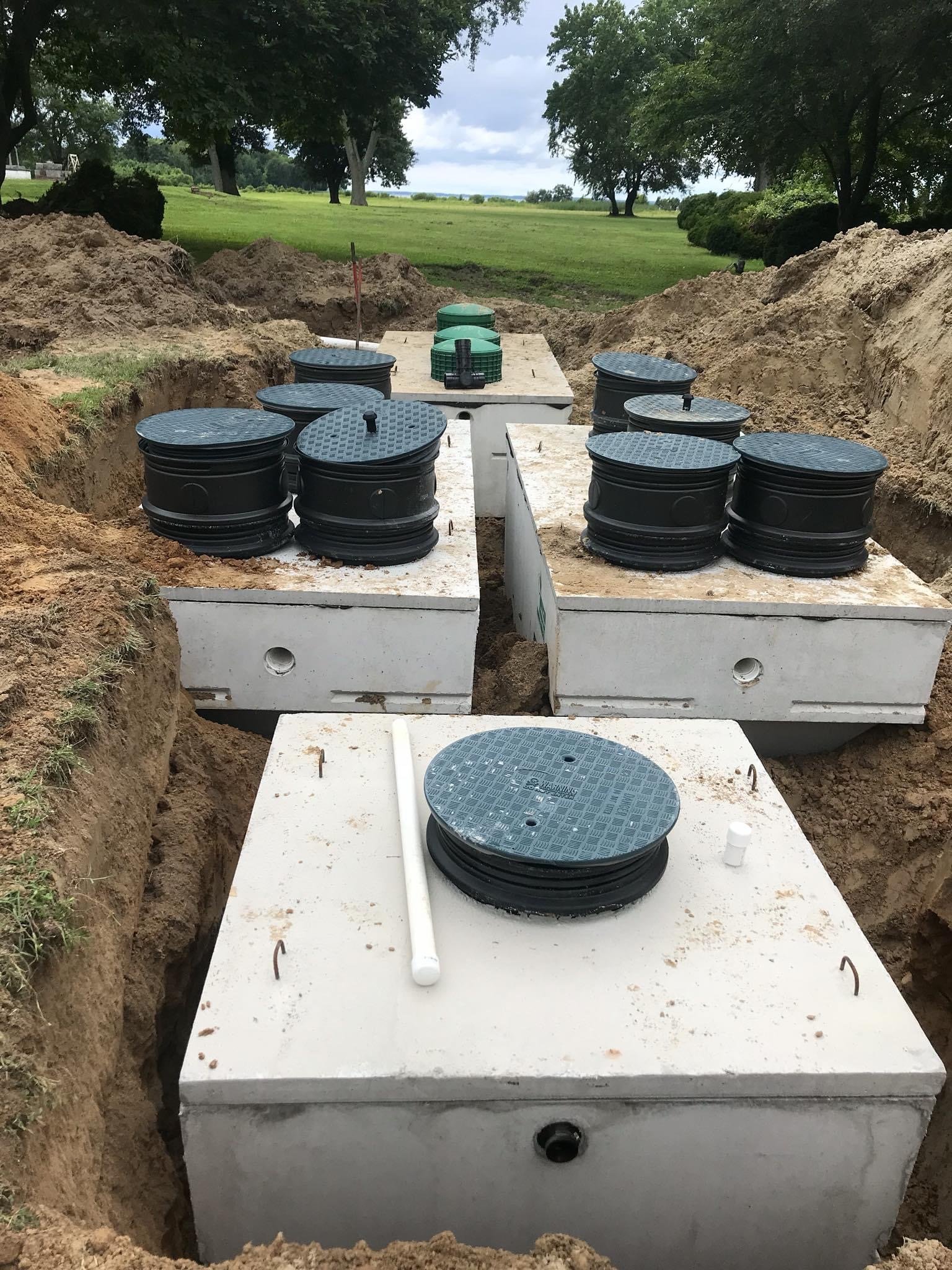Stillwell Septic And Grading Fundamentals Explained
Stillwell Septic And Grading Fundamentals Explained
Blog Article
Not known Facts About Stillwell Septic And Grading
Table of ContentsSome Ideas on Stillwell Septic And Grading You Need To KnowFacts About Stillwell Septic And Grading RevealedThe Only Guide for Stillwell Septic And GradingIndicators on Stillwell Septic And Grading You Need To KnowAbout Stillwell Septic And GradingHow Stillwell Septic And Grading can Save You Time, Stress, and Money.The Definitive Guide to Stillwell Septic And Grading

Home owners must likewise enlighten themselves on the essentials of septic tanks to ensure they make notified decisions throughout the installation process - Septic Tank Installation. Septic systems are an important part of lots of homes that are not connected to a metropolitan drain system. They are created to deal with and take care of house wastewater on-site
The septic storage tank is a huge, below ground container made of concrete, fiberglass, or plastic. The tank divides the strong waste from the fluid waste.
Stillwell Septic And Grading Fundamentals Explained
It is additionally crucial to conserve water and stay clear of straining the system. Basic actions such as repairing dripping taps and commodes, mounting low-flow showerheads and bathrooms, and spreading out laundry loads can assist lower water use and expand the life of the septic system.
The topography of the site is also evaluated to guarantee that the septic tank is set up at the right elevation. http://dugoutmugs01.unblog.fr/?p=3456. The system must be installed at a greater altitude than the surrounding area to protect against contamination of the surrounding atmosphere. Troubles are the minimum distances needed by regulation between the septic system and other structures or features such as wells, structures, and property lines
The altitudes will make certain that the septic system works appropriately, and wastewater is efficiently treated. It makes sure that the septic system is mounted in the most optimal area, taking right into consideration the soil, topography, and troubles.
Little Known Facts About Stillwell Septic And Grading.
Before mounting a septic storage tank, house owners require to get authorizations and comply with regulations. Some of the permits and guidelines that homeowners need to take into consideration include:: Homeowners need to get a permit from the regional health and wellness division or building department prior to setting up a septic system.
Some municipalities might require a minimal lot dimension for septic system installation.: House owners require to abide go to website with ecological policies when installing a septic system. https://issuu.com/stillwellsag. For instance, some states might call for an ecological impact assessment prior to mounting a septic system.: Home owners require to abide by building and construction guidelines when mounting a septic system.
The Ultimate Guide To Stillwell Septic And Grading
Some municipalities might call for routine assessments and pumping of the septic storage tank. It is important for property owners to acquire licenses and abide with guidelines prior to installing a septic system.
One of one of the most crucial elements to think about when choosing a septic system is the dimension. A septic storage tank that is as well small for the home's requirements will call for more constant pumping, while a container that is also large can bring about extreme water buildup and potential system failure. A general guideline of thumb is that the tank needs to have the ability to hold at the very least 2 days' well worth of wastewater.
The Ultimate Guide To Stillwell Septic And Grading

Plastic storage tanks are budget-friendly and light-weight, however they might not be as resilient as other materials and can be susceptible to cracking. It's additionally important to think about the kind of system the sewage-disposal tank will certainly be utilized with. There are 2 major types of septic systems: gravity and stress. Gravity systems count on the natural flow of wastewater to move through the system, while stress systems use a pump to relocate wastewater via the system.
Getting My Stillwell Septic And Grading To Work
In general, selecting the appropriate septic tank for a home is a vital decision that requires careful consideration. Before installing a septic tank, home owners need to take particular actions to prepare for the setup process.
Below are some necessary security actions to adhere to: Wear protective gear: House owners should use safety equipment, such as handwear covers, boots, and helmets, to avoid injury throughout the setup procedure. Avoid electrical lines: Homeowners need to stay clear of excavating near electric lines to stop electrocution. Use caution when running heavy machinery: Home owners must make use of care when running heavy equipment to stop accidents and injuries.
Get This Report on Stillwell Septic And Grading
By adhering to these necessary steps, house owners can make certain an effective sewage-disposal tank setup procedure. Septic storage tank installment is a critical process that calls for mindful planning and implementation. Home owners who are installing a septic system for the first time need to recognize the important steps associated with the process to make sure that their septic tank functions efficiently and properly.

Report this page